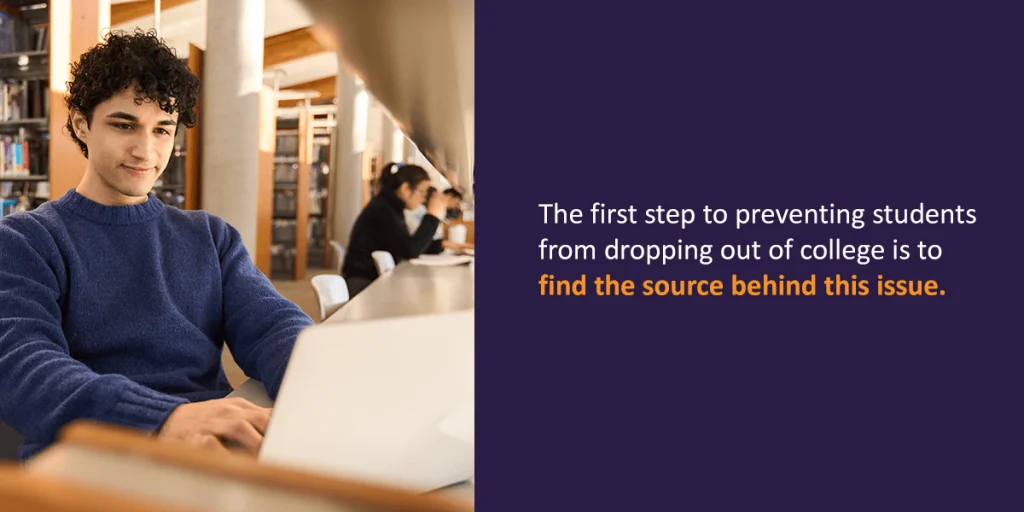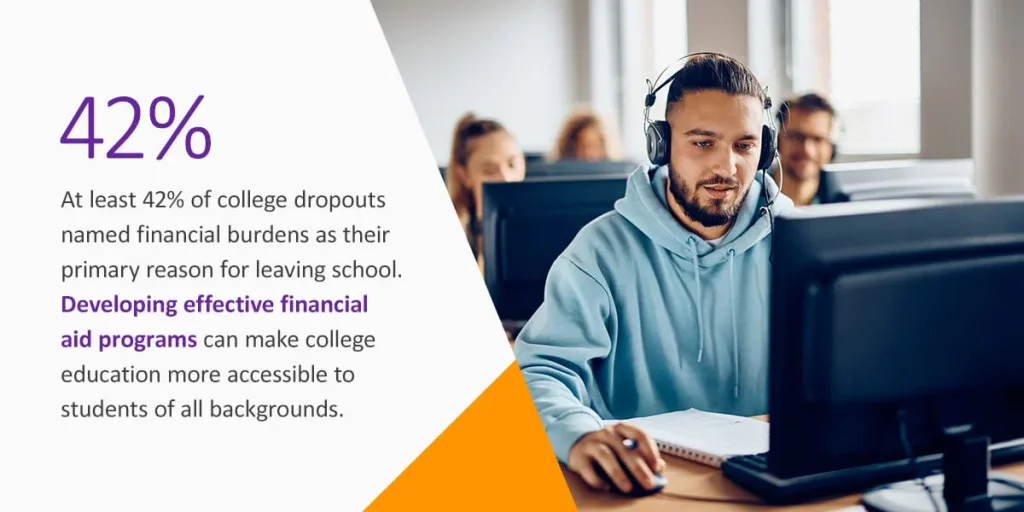




Completing a four-year college degree is a challenge in itself, and many external obstacles make it difficult for at-risk students to graduate. College dropouts may continue to face lower socioeconomic status, fewer job opportunities, and lower earning ability. Even a strong job market can make it challenging for students to remain focused on their education for fear of missing out on workforce opportunities.
Unfortunately, workers without college experience have struggled the most in the aftermath of the COVID-19 pandemic. In fact, approximately four million workers have yet to find another job since the pandemic, which has led to a continued backslide for workers without a college education. To maintain student retention rates, college administrators and faculty can do their part and provide the right resources and alternatives to at-risk students.

Did you know that over 40 percent of students currently enrolled in college have considered dropping out in the past six months? The first step to preventing students from dropping out of college is to find the source behind this issue. While there are countless reasons why an individual must leave or feels the need to drop out of college, some of the most common reasons include:
With about a third of undergraduate students leaving their programs, dropout prevention is a primary concern for today’s institutions. Preventing college student dropout involves many strategies that focus on supporting and lightening the burden on learners. Here are some dropout prevention tactics your higher education institution may want to administer.
It’s no secret that mental health issues are on the rise across all demographics. For many students, going to college means taking on financial and work-life burdens that can make it difficult for them to manage stress and anxiety. Implementing mental health solutions can make all the difference in destigmatizing poor mental health. Some examples may include providing counselors, peer-support programs, therapy dogs, or even connecting students with online therapy programs.
Mental health support on college campuses should also entail information on receiving these services. Students won’t participate in counseling if they don’t know it exists. Promote your mental health programs, and draw attention to features like free services or online sign-ups. The easier it is to participate, the more likely students are to get help.

At least 42 percent of college dropouts named financial burdens as their primary reason for leaving school. Developing effective financial aid programs can make college education more accessible to students of all backgrounds.
Reducing tuition rates in exchange for volunteer hours may be an option to explore. In addition, equipping advisors with tools to help students manage their finances or learn to create a personal budget can also help them feel supported.
The rigor of college programs is often challenging, especially for students without much experience managing their time or studying independently. Study programs can prevent students from falling behind academically and feeling overwhelmed. Higher education institutions can help students feel supported with initiatives like:

With freshmen at such a high risk, institutions can consider ways to make the switch to college easier for them. One common option is to create or strengthen an orientation program. You could hold seminars on topics like dorm life, making friends, time management, personal wellness, and using campus resources.
Another great way to promote retention for freshmen is with peer mentor programs. Pair each of your upperclassmen with a freshman and have them check in with each other regularly. The upperclassmen can help offer advice and give them support when they need it.
Remember to consider the needs of your unique student population while developing these programs. For example, a community college program could offer online resources to accommodate students who work outside of class and wouldn’t be able to attend an in-person seminar.
If your goal is to improve student success, there’s no better way than to use software to streamline your efforts. Automation is the most effective tool for measuring learning outcomes and improving institutional research and planning. With a centralized platform, you can easily collect, manage, and measure student data to identify where you can make improvements and where your students require support.

For example, you can gather insights about attendance, academic performance, and other aspects with institutional data. Early alert systems are an effective use of retention software, as they flag students who appear at risk and help you make the most effective interventions.
Improving engagement and supporting students at your higher education institution are effective ways to prevent dropout rates from climbing. Implementing new strategies for student retention and success can also help you meet your institutional goals. At Watermark, we aim to enable higher education institutions to better understand student performance and needs.
Our services and solutions make it easier to assess your programs, gather insights, measure data, and drive continuous improvement throughout every department. When you better understand your data, you can cultivate actionable steps for improving learning outcomes and student support systems. To learn more about how Watermark can help your institution and students thrive, request a demo today.






























































































































































































































































































































































































